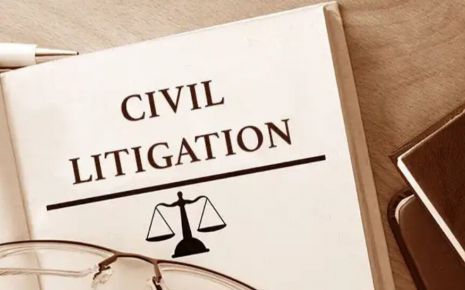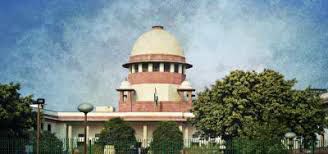Scope and Applicability of Part 1 and 2 of Section 304 for Culpable Homicide
The Indian Penal Code, 1860 recognizes two kinds of Culpable Homicide. The first
one is Culpable Homicide not amounting to Murder (Section 299 and 304 of the IPC)
and another one is Culpable Homicide amounting to Murder (Section 300 and 302 of IPC). Section 304 of IPC provides punishment for Culpable Homicide not amounting
to Murder. Under it there are two kinds of punishments applying to two different
circumstances:
In the case of�Jgriti Devi v State of Himachal Pradesh[ii]�it was held that the expression intention and knowledge postulate the existence of positive mental attitude. It was further held that when and if there is intent and knowledge, then the same would be a case under first part of section 304 and if it is only case of knowledge and not intention to cause death by bodily injury, then the same would be a case of second part of section 304.
In the case of�Balwinder Singh v State of Punjab[iii]�the court held that for absence of intention to cause death or knowledge that it might cause death, the accused cannot be held guilty for murder or culpable homicide not amounting to murder. He was convicted under section 448 (trespass) and 325 (grievous hurt by blunt weapon) of IPC.
The first and second clause of section 299 (IPC) requires intention. Where the intention is to cause death the offence is murder unless the case falls under one of the exceptions mentioned in section 300. If the exception does not apply, the first part of section 304 will regulate the punishment. In the case of�Purna Padhi v State of Orissa[iv]�the deceased by the two accused person sustained multiple injuries by sharp cutting weapons.
The injury on the right foot of the victim led to the amputation of the right foot from the level of the ankle. The victim was moved to hospital where 18 days after the occurrence of the deceased died due to Uremia. As to the injury on the foot the High Court held that the offence committed could not be said to be murder. But no doubt by causing the foot injury along with others with sharp weapons, the accused must have intended to cause such bodily injury as was likely to cause death and the offence thus attracts the mischief of Part 1 of Section 304 of IPC and the accused were convicted under Section 304 Part 1 of IPC.
Intention is purpose or design with which an act is done. It is the fair knowledge of the act coupled with the desire of it. An act is intentional insofar as it exists in idea before it exists in facts and the knowledge is only the awareness of the consequences of act.[v]�Obviously degree of knowledge which any particular person can be assumed to possess must vary. Intention and knowledge commonly go together, but there may be exceptional cases. There may be intention without knowledge and knowledge without intention in some cases.
In the case of�Matal Kishu v State[vi]�after the quarrel between the accused and the deceased, the deceased was hit by an iron rod by the accused. Thus injuries to the deceased were caused by the accused without premeditation and allegation of acting in a cruel or unusual manner was baseless. Conviction of accused was altered from 302 to one under section 304 Part 1.
Sometimes it becomes very difficult as to whether a person is liable under section 325 IPC for causing grievous hurt or under section 304 IPC for culpable homicide not amounting to murder when the injury results in the death of the victim.[vii]
In the case of�Sompal Singh v State of UP[viii]�the injuries were sufficient enough to endanger the human life. The injury was clearly falling under the category of injuries are as likely to cause death even though each injury may not be sufficient to cause death. In such a situation, the conviction of the appellant as recorded by the High Court under section 304 Part 1 was upheld.
There are also cases like the case of�Abdul Azad v State of UP[ix]�where the incident occurred within family in rage without any premeditation, accused fired single shot causing death, accused was convicted under Part 1 of Section 304. In the case where accused gave single axe blow on the head of the deceased causing death, there was no preparation or premeditation on the part of the accused, he had lost self control, and was convicted under Part 1 of section 304.[x]
The nature and the number of injuries as well as their location and the weapon used lead to conclude that to a reasonable person, an attack of the nature launched by the appellant on victim could cause his death. While it may be difficult to delve into the mind of attacker to decode his intention knowledge for the consequences of his actions can certainly be attributed to him. The appellant had knowledge that his actions are likely to cause the death. In this case, he was held guilty of culpable homicide not amounting to murder and held liable to be sentenced under the second part of the section 304.[xi]
In the case of�Narayan v State of MP[xii]�there was a quarrel between the accused and the deceased. Suddenly the accused hurled only a knife injury on the chest of the accused when they were grappling each other. The chest injury was sufficient in ordinary course of nature to cause death. It could not be said that the accused inflicted the injury intending to cause death. He could safely be credited with knowledge that the blow inflicted was likely to cause death.
The accused was convicted under Part 2 of section 304 of IPC. In the case of�Raman v State of Kerala[xiii]the accused had a suspicion about the chastity of his wife, inflicted injuries by stick causing death. It was not discernible that the injuries were inflicted with an intention to cause death of victim or to cause such bodily injury that it was likely to cause the death of the victim. However, it was clear that the acts were done by the accused with knowledge that it was likely to cause death. The conviction of accused under section 302 (IPC) was altered to one under section 304, Part 2 of IPC.
In the case of�Sikhar Bahera v State of Orissa[xiv],�there was free fight between two groups which had formed unlawful assembly and accused persons, as alleged by the prosecution , had caused two death and some injuries to the persons of complainant side. The dispute was regarding some landed property over which none was enjoying the possession. So there was no question of availability of private defence to any party. Circumstances disclosed that the object was to fight only and not to cause death or grievous injury to any person. It was held that since, it was well within their knowledge that at least an offence of culpable homicide was likely to be committed, the accused were convicted under Part 2 of section 304 (IPC).
In the case of�Madhusudan Satpathy v State of Orissa, (AIR 1944 SC 474)�the accused assaulted and caused the death of the victim with Bhala and relying on the prosecution witness the High Court convicted him under section 304 Part 1. On appeal Supreme Court found that there was only one injury on the head that proved to be fatal and weapons used were not deadly but the accused had knowledge that injuries caused by them were likely to cause death. It was held that the accused was guilty of culpable homicide and his conviction was altered to Part 2 of section 304 of IPC.
Conclusion
The court while determining question that whether it is culpable homicide or murder has to keep in focus key words used in sections 299 and 300 of the Indian Penal Code, 1860. It is the degree of probability of death which determines that whether a case would fall under the ambit of murder or culpable homicide not amounting to murder. But, when there is question as to decide that whether the particular offence would come within the scope of Part 1 or Part 2 of the culpable homicide not amounting to murder, the court would check two important elements mentioned in the section 304. The first element is intention and another one is knowledge.
When there is a case which involves pure intention to cause death with the knowledge that the performed act is likely to cause death, then the accused would be convicted under the first part of section 304. But, if the element of intention for causing death is missing and the act is done with the knowledge that it is likely to cause death of the person, then in such a case, the accused would be punished under Part 2 of section 304 of the Indian Penal Code, 1860.
End-Notes:
- If the act by which death is caused is done with�intention�of causing
death or such bodily injury as is likely to cause death, the punishment is
imprisonment for life, or imprisonment of either description of a term which
may extend to ten years and fine.
- If the act is done with�knowledge�that it is likely to cause death but without any�intention�to cause death or such bodily injury as is likely to cause death, the punishment is imprisonment of either description for a term which may extend to 10 years, or with fine, or with both.[i]
In the case of�Jgriti Devi v State of Himachal Pradesh[ii]�it was held that the expression intention and knowledge postulate the existence of positive mental attitude. It was further held that when and if there is intent and knowledge, then the same would be a case under first part of section 304 and if it is only case of knowledge and not intention to cause death by bodily injury, then the same would be a case of second part of section 304.
Cases and Circumstances falling under Part 1 of Section 304 (IPC)
For a case to fall under the first part of section 304, the element of intention is mandatory. By intention it meant the expectation of the consequences in question and intention does not therefore necessarily involve premeditation or thinking out the killing beforehand. If a person performing some act either (1) expects death to be consequences thereof; or (2) expects a dangerous bodily injury likely to cause death; or (3) knows that death is likely consequence thereof, and in each case death ensues, his intention in the first two cases and knowledge in the third mentioned circumstance.In the case of�Balwinder Singh v State of Punjab[iii]�the court held that for absence of intention to cause death or knowledge that it might cause death, the accused cannot be held guilty for murder or culpable homicide not amounting to murder. He was convicted under section 448 (trespass) and 325 (grievous hurt by blunt weapon) of IPC.
The first and second clause of section 299 (IPC) requires intention. Where the intention is to cause death the offence is murder unless the case falls under one of the exceptions mentioned in section 300. If the exception does not apply, the first part of section 304 will regulate the punishment. In the case of�Purna Padhi v State of Orissa[iv]�the deceased by the two accused person sustained multiple injuries by sharp cutting weapons.
The injury on the right foot of the victim led to the amputation of the right foot from the level of the ankle. The victim was moved to hospital where 18 days after the occurrence of the deceased died due to Uremia. As to the injury on the foot the High Court held that the offence committed could not be said to be murder. But no doubt by causing the foot injury along with others with sharp weapons, the accused must have intended to cause such bodily injury as was likely to cause death and the offence thus attracts the mischief of Part 1 of Section 304 of IPC and the accused were convicted under Section 304 Part 1 of IPC.
Intention is purpose or design with which an act is done. It is the fair knowledge of the act coupled with the desire of it. An act is intentional insofar as it exists in idea before it exists in facts and the knowledge is only the awareness of the consequences of act.[v]�Obviously degree of knowledge which any particular person can be assumed to possess must vary. Intention and knowledge commonly go together, but there may be exceptional cases. There may be intention without knowledge and knowledge without intention in some cases.
In the case of�Matal Kishu v State[vi]�after the quarrel between the accused and the deceased, the deceased was hit by an iron rod by the accused. Thus injuries to the deceased were caused by the accused without premeditation and allegation of acting in a cruel or unusual manner was baseless. Conviction of accused was altered from 302 to one under section 304 Part 1.
Sometimes it becomes very difficult as to whether a person is liable under section 325 IPC for causing grievous hurt or under section 304 IPC for culpable homicide not amounting to murder when the injury results in the death of the victim.[vii]
In the case of�Sompal Singh v State of UP[viii]�the injuries were sufficient enough to endanger the human life. The injury was clearly falling under the category of injuries are as likely to cause death even though each injury may not be sufficient to cause death. In such a situation, the conviction of the appellant as recorded by the High Court under section 304 Part 1 was upheld.
There are also cases like the case of�Abdul Azad v State of UP[ix]�where the incident occurred within family in rage without any premeditation, accused fired single shot causing death, accused was convicted under Part 1 of Section 304. In the case where accused gave single axe blow on the head of the deceased causing death, there was no preparation or premeditation on the part of the accused, he had lost self control, and was convicted under Part 1 of section 304.[x]
Cases and Circumstances falling under Part 2 of Section 304 (IPC)
If the act is done with knowledge that it is likely to cause death but without any�intention�to cause death or such bodily injury as is likely to cause death, the punishment is imprisonment of either description for a term which may extend to 10 years, or with fine, or with both under the second part of section 304. Knowledge is a strong word and imports a certainty and not merely a probability. The element of knowledge is mandatory in the case for applicability of the second part of section 304.The nature and the number of injuries as well as their location and the weapon used lead to conclude that to a reasonable person, an attack of the nature launched by the appellant on victim could cause his death. While it may be difficult to delve into the mind of attacker to decode his intention knowledge for the consequences of his actions can certainly be attributed to him. The appellant had knowledge that his actions are likely to cause the death. In this case, he was held guilty of culpable homicide not amounting to murder and held liable to be sentenced under the second part of the section 304.[xi]
In the case of�Narayan v State of MP[xii]�there was a quarrel between the accused and the deceased. Suddenly the accused hurled only a knife injury on the chest of the accused when they were grappling each other. The chest injury was sufficient in ordinary course of nature to cause death. It could not be said that the accused inflicted the injury intending to cause death. He could safely be credited with knowledge that the blow inflicted was likely to cause death.
The accused was convicted under Part 2 of section 304 of IPC. In the case of�Raman v State of Kerala[xiii]the accused had a suspicion about the chastity of his wife, inflicted injuries by stick causing death. It was not discernible that the injuries were inflicted with an intention to cause death of victim or to cause such bodily injury that it was likely to cause the death of the victim. However, it was clear that the acts were done by the accused with knowledge that it was likely to cause death. The conviction of accused under section 302 (IPC) was altered to one under section 304, Part 2 of IPC.
In the case of�Sikhar Bahera v State of Orissa[xiv],�there was free fight between two groups which had formed unlawful assembly and accused persons, as alleged by the prosecution , had caused two death and some injuries to the persons of complainant side. The dispute was regarding some landed property over which none was enjoying the possession. So there was no question of availability of private defence to any party. Circumstances disclosed that the object was to fight only and not to cause death or grievous injury to any person. It was held that since, it was well within their knowledge that at least an offence of culpable homicide was likely to be committed, the accused were convicted under Part 2 of section 304 (IPC).
In the case of�Madhusudan Satpathy v State of Orissa, (AIR 1944 SC 474)�the accused assaulted and caused the death of the victim with Bhala and relying on the prosecution witness the High Court convicted him under section 304 Part 1. On appeal Supreme Court found that there was only one injury on the head that proved to be fatal and weapons used were not deadly but the accused had knowledge that injuries caused by them were likely to cause death. It was held that the accused was guilty of culpable homicide and his conviction was altered to Part 2 of section 304 of IPC.
Conclusion
The court while determining question that whether it is culpable homicide or murder has to keep in focus key words used in sections 299 and 300 of the Indian Penal Code, 1860. It is the degree of probability of death which determines that whether a case would fall under the ambit of murder or culpable homicide not amounting to murder. But, when there is question as to decide that whether the particular offence would come within the scope of Part 1 or Part 2 of the culpable homicide not amounting to murder, the court would check two important elements mentioned in the section 304. The first element is intention and another one is knowledge.
When there is a case which involves pure intention to cause death with the knowledge that the performed act is likely to cause death, then the accused would be convicted under the first part of section 304. But, if the element of intention for causing death is missing and the act is done with the knowledge that it is likely to cause death of the person, then in such a case, the accused would be punished under Part 2 of section 304 of the Indian Penal Code, 1860.
End-Notes:
- Section 304 (Indian Penal Code, 1860).
- Jgriti Devi v State of Himachal Pradesh, (2009) 14 SCC 771 : AIR 2009 SC 2869.
- 1989 CrLJ 718 (Punj).
- 1992 CrLJ 687.
- Ratanlal and Dhirajlal, The Indian Penal Code, 34TH�Edition (Volume 2).
- 2006 CrLJ 2517 (Jhar).
- Ratanlal and Dhirajlal, The Indian Penal Code, 34TH�Edition (Volume 2)
- (2014) 7 SCC 316.
- 2017(6) ALL LJ 17 (ALL) (DB)
- Harekrushna Sahu v State of Orissa, 2015 CrLJ 2965 (Ori)
- Gudu Ram v State, 2013 CrLJ 481 (SC)
- (1992) 2 Crimes 611 (MP)
- 2015 CrLJ 2989 (Ker) (DB)
- 1993 CrLJ 3669 (SC)
Law Article in India
Legal Question & Answers
Lawyers in India - Search By City
LawArticles
How To File For Mutual Divorce In Delhi

How To File For Mutual Divorce In Delhi Mutual Consent Divorce is the Simplest Way to Obtain a D...
Increased Age For Girls Marriage

It is hoped that the Prohibition of Child Marriage (Amendment) Bill, 2021, which intends to inc...
Facade of Social Media

One may very easily get absorbed in the lives of others as one scrolls through a Facebook news ...
Section 482 CrPc - Quashing Of FIR: Guid...

The Inherent power under Section 482 in The Code Of Criminal Procedure, 1973 (37th Chapter of t...
The Uniform Civil Code (UCC) in India: A...

The Uniform Civil Code (UCC) is a concept that proposes the unification of personal laws across...
Role Of Artificial Intelligence In Legal...

Artificial intelligence (AI) is revolutionizing various sectors of the economy, and the legal i...








Please Drop Your Comments